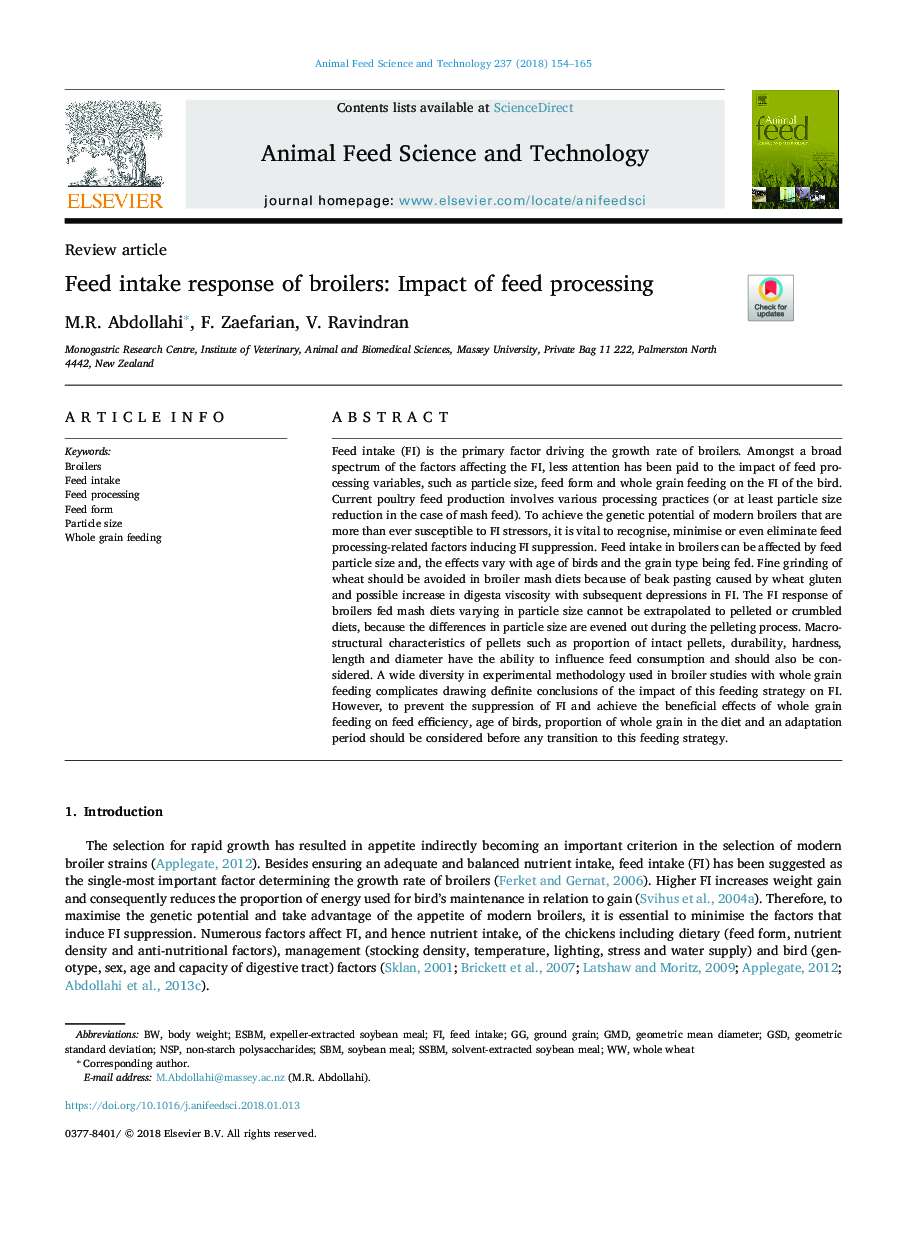| Article ID | Journal | Published Year | Pages | File Type |
|---|---|---|---|---|
| 8491025 | Animal Feed Science and Technology | 2018 | 12 Pages |
Abstract
Feed intake (FI) is the primary factor driving the growth rate of broilers. Amongst a broad spectrum of the factors affecting the FI, less attention has been paid to the impact of feed processing variables, such as particle size, feed form and whole grain feeding on the FI of the bird. Current poultry feed production involves various processing practices (or at least particle size reduction in the case of mash feed). To achieve the genetic potential of modern broilers that are more than ever susceptible to FI stressors, it is vital to recognise, minimise or even eliminate feed processing-related factors inducing FI suppression. Feed intake in broilers can be affected by feed particle size and, the effects vary with age of birds and the grain type being fed. Fine grinding of wheat should be avoided in broiler mash diets because of beak pasting caused by wheat gluten and possible increase in digesta viscosity with subsequent depressions in FI. The FI response of broilers fed mash diets varying in particle size cannot be extrapolated to pelleted or crumbled diets, because the differences in particle size are evened out during the pelleting process. Macro-structural characteristics of pellets such as proportion of intact pellets, durability, hardness, length and diameter have the ability to influence feed consumption and should also be considered. A wide diversity in experimental methodology used in broiler studies with whole grain feeding complicates drawing definite conclusions of the impact of this feeding strategy on FI. However, to prevent the suppression of FI and achieve the beneficial effects of whole grain feeding on feed efficiency, age of birds, proportion of whole grain in the diet and an adaptation period should be considered before any transition to this feeding strategy.
Keywords
Related Topics
Life Sciences
Agricultural and Biological Sciences
Animal Science and Zoology
Authors
M.R. Abdollahi, F. Zaefarian, V. Ravindran,
